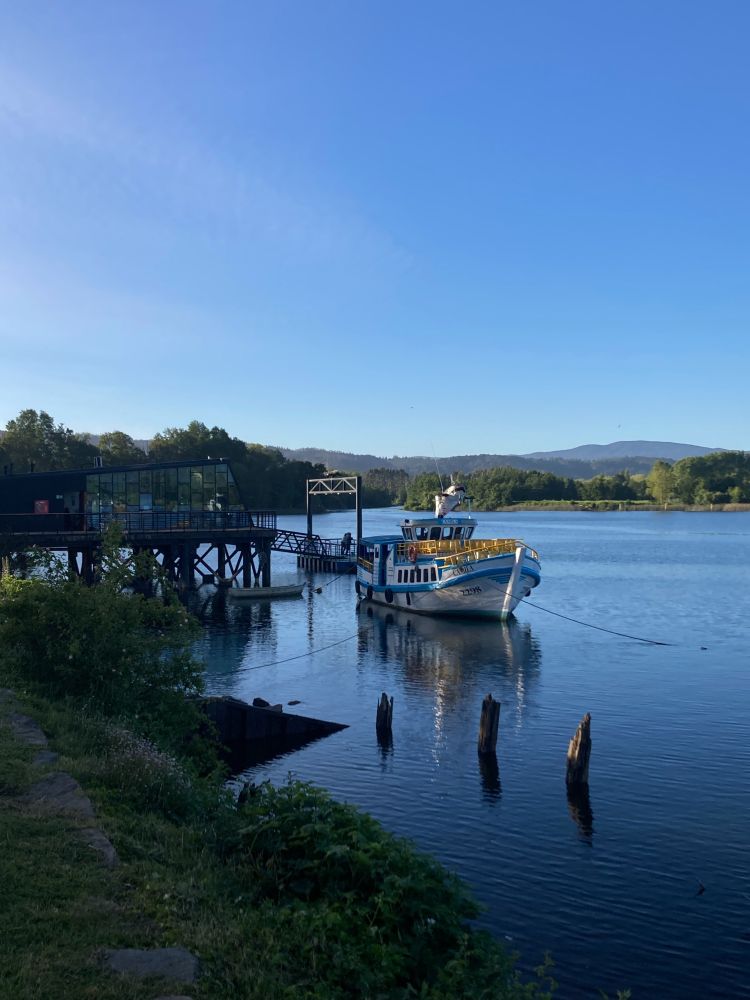

More info www.slcu.cam.ac.uk/news/plant-a...
Illustration by Elise Laruelle & leaf images by @sainikumud.bsky.social
More info www.slcu.cam.ac.uk/news/plant-a...
Illustration by Elise Laruelle & leaf images by @sainikumud.bsky.social

More info www.slcu.cam.ac.uk/news/plant-a...
Illustration by Elise Laruelle & leaf images by @sainikumud.bsky.social
Webinar: 10 Dec 2025
Applications close: 19 Jan 2026
www.findaphd.com/phds/project...
Webinar: 10 Dec 2025
Applications close: 19 Jan 2026
www.findaphd.com/phds/project...






📽️ tinyurl.com/5ac6ymmd
👉 tinyurl.com/mr2ke37s
@cgiar.org @cambridgebiosci.bsky.social @paszkowskilab.bsky.social @stjohnscollege.bsky.social

📽️ tinyurl.com/5ac6ymmd
👉 tinyurl.com/mr2ke37s
@cgiar.org @cambridgebiosci.bsky.social @paszkowskilab.bsky.social @stjohnscollege.bsky.social
Applications are now open for the 2026 Experience Postgrad Life Sciences Programme. Gain hands-on lab experience with an 8-week summer placement, in partnership with @corpuscambridge.bsky.social!
🔗 www.exppg.lifesci.cam.ac.uk
#SummerPlacement #Cambridge

Applications are now open for the 2026 Experience Postgrad Life Sciences Programme. Gain hands-on lab experience with an 8-week summer placement, in partnership with @corpuscambridge.bsky.social!
🔗 www.exppg.lifesci.cam.ac.uk
#SummerPlacement #Cambridge
Find out the details about each of the eight exciting opportunities:
www.findaphd.com/phds/program...

Find out the details about each of the eight exciting opportunities:
www.findaphd.com/phds/program...

#NikonMicroscopy #microscope #lightmicroscopy #plantscience #FLIM #confocal #biology
Date: Wednesday 7th January, 2026
Time: 9:15 – 17:00
Location: Sir Kenneth Wheare Hall, Clerici Building, Oxford Brookes University, Headington, Oxford, OX3 0BP

#NikonMicroscopy #microscope #lightmicroscopy #plantscience #FLIM #confocal #biology
Dr. Wightman will be sharing "FLIM-confocal-Raman imaging in all things plant" - a session you won't want to miss!

Dr. Wightman will be sharing "FLIM-confocal-Raman imaging in all things plant" - a session you won't want to miss!
🌿 Join TPJ! You´ll:
🧬 Select standout TPJ papers
📰 Write short commentaries
🎨 Choose cover images
💬 Work with authors & SEB team
👉https://onlinelibrary.wiley.com/page/journal/1365313x/homepage/rheditor
📩 Rosie Trice 𝐫𝐭𝐫𝐢𝐜𝐞@𝐰𝐢𝐥𝐞𝐲.𝐜𝐨𝐦
🗓️24Nov2025



Read in @newphyt.bsky.social
doi.org/10.1111/nph....
@dromius.bsky.social
Read in @newphyt.bsky.social
doi.org/10.1111/nph....
@dromius.bsky.social
www.cam.ac.uk/jobs/post-do...
www.schornacklab.net


www.cam.ac.uk/jobs/post-do...
www.schornacklab.net
We were seriously impressed by the beautifully carved and brilliantly lit pumpkins from @thesainsburylab.bsky.social🕯️
We also got spiritedly competitive with our annual team pumpkin carving competition 😄🎃
Who knew plant scientists were such talented artists? 🪚🎃🌿

We were seriously impressed by the beautifully carved and brilliantly lit pumpkins from @thesainsburylab.bsky.social🕯️
We also got spiritedly competitive with our annual team pumpkin carving competition 😄🎃
Who knew plant scientists were such talented artists? 🪚🎃🌿
This Halloween, Raymond Wightman & Daniel Sparrow used @slcuplants.bsky.social’s powerful imaging tools to reveal:
🔬 Skin detail with the #Keyence microscope
💡 Beta-carotene via #Raman spectroscopy
❄️ Flash-frozen oval cells via cryo-SEM
#HappyHalloween



This Halloween, Raymond Wightman & Daniel Sparrow used @slcuplants.bsky.social’s powerful imaging tools to reveal:
🔬 Skin detail with the #Keyence microscope
💡 Beta-carotene via #Raman spectroscopy
❄️ Flash-frozen oval cells via cryo-SEM
#HappyHalloween
First, a pre-print on how rice distinguishes friend (AM fungi)🍄 from foe (pathogens)👾: doi.org/10.1101/2025...
And second, a review on single-cell omic approaches to understand the spatially and temporally complex AM symbiosis 🔬: doi.org/10.1093/jxb/...

First, a pre-print on how rice distinguishes friend (AM fungi)🍄 from foe (pathogens)👾: doi.org/10.1101/2025...
And second, a review on single-cell omic approaches to understand the spatially and temporally complex AM symbiosis 🔬: doi.org/10.1093/jxb/...
We are recruiting got a Horticultural Technician:
- Crop Science Centre
- Fixed term
- Closes on Friday 31 October
www.cam.ac.uk/jobs/horticu...
#plantscijobs #plantsciences

We are recruiting got a Horticultural Technician:
- Crop Science Centre
- Fixed term
- Closes on Friday 31 October
www.cam.ac.uk/jobs/horticu...
#plantscijobs #plantsciences
It's almost 200 years to the day since Henslow took an oath before the Vice Chancellor as 'King's Reader in Botany' on 10 October 1825.
Find out more about his legacy: tinyurl.com/4stzwhz9
@cam.ac.uk


It's almost 200 years to the day since Henslow took an oath before the Vice Chancellor as 'King's Reader in Botany' on 10 October 1825.
Find out more about his legacy: tinyurl.com/4stzwhz9
@cam.ac.uk
Caroline Faessler 🌱 Don't miss it!
@camplantsci.bsky.social
Sign up here👉 www.tickettailor.com/events/engin...
#plantsciences #marinemicroalga #Nicotianabenthamiana

Caroline Faessler 🌱 Don't miss it!
@camplantsci.bsky.social
Sign up here👉 www.tickettailor.com/events/engin...
#plantsciences #marinemicroalga #Nicotianabenthamiana
This interdisciplinary seminar series explores aspects of Rau as a crucible of creative epistemic frictions between botanical narratives and colonised plant worlds
2-5pm, Pembroke College, CB2 1RF

This interdisciplinary seminar series explores aspects of Rau as a crucible of creative epistemic frictions between botanical narratives and colonised plant worlds
2-5pm, Pembroke College, CB2 1RF
Congrats to all, esp. @bijuntang.bsky.social and @xanderjones.bsky.social ! Super happy to be a part of this great story!


Congrats to all, esp. @bijuntang.bsky.social and @xanderjones.bsky.social ! Super happy to be a part of this great story!
Kudos to @xanderjones.bsky.social and @bijuntang.bsky.social for spearheading this work and to @gesahoffmann.bsky.social at @mpi-mp-potsdam.bsky.social for using SalicS in viral infections🌱
Latest biosensor from @xanderjones.bsky.social team
In Science doi.org/10.1126/scie...
Summary www.slcu.cam.ac.uk/news/new-bio...
Kudos to @xanderjones.bsky.social and @bijuntang.bsky.social for spearheading this work and to @gesahoffmann.bsky.social at @mpi-mp-potsdam.bsky.social for using SalicS in viral infections🌱
Latest biosensor from @xanderjones.bsky.social team
In Science doi.org/10.1126/scie...
Summary www.slcu.cam.ac.uk/news/new-bio...
Latest biosensor from @xanderjones.bsky.social team
In Science doi.org/10.1126/scie...
Summary www.slcu.cam.ac.uk/news/new-bio...

